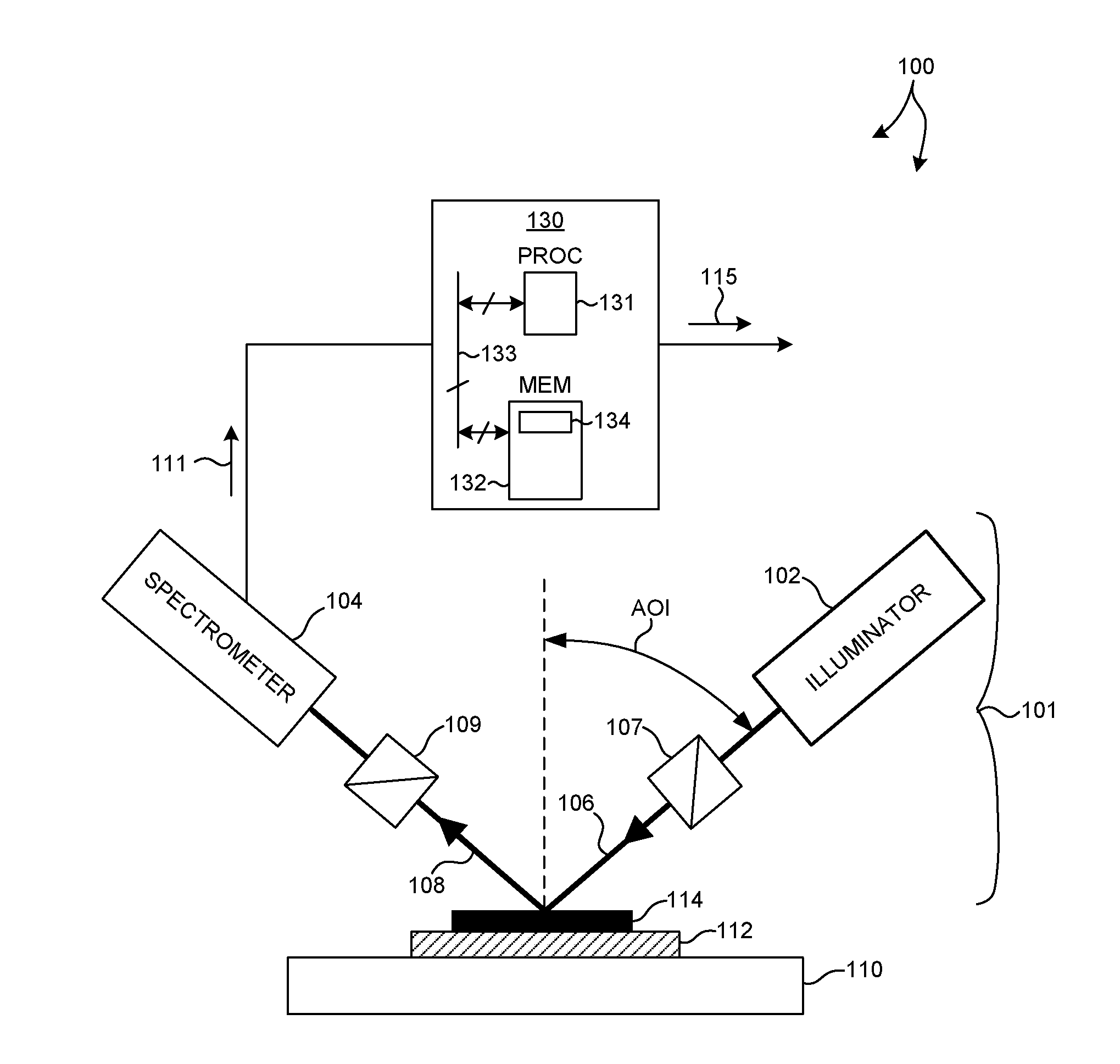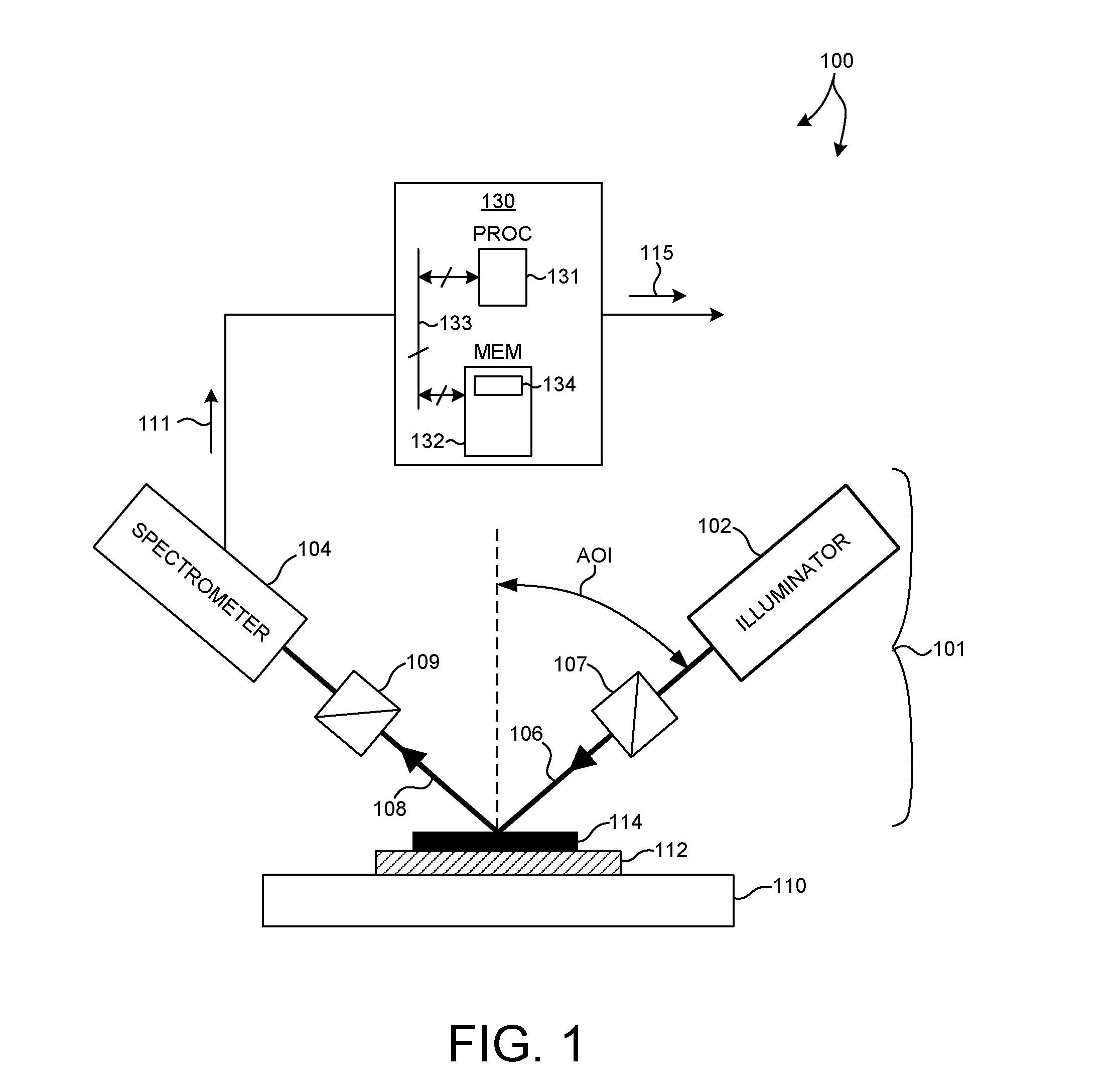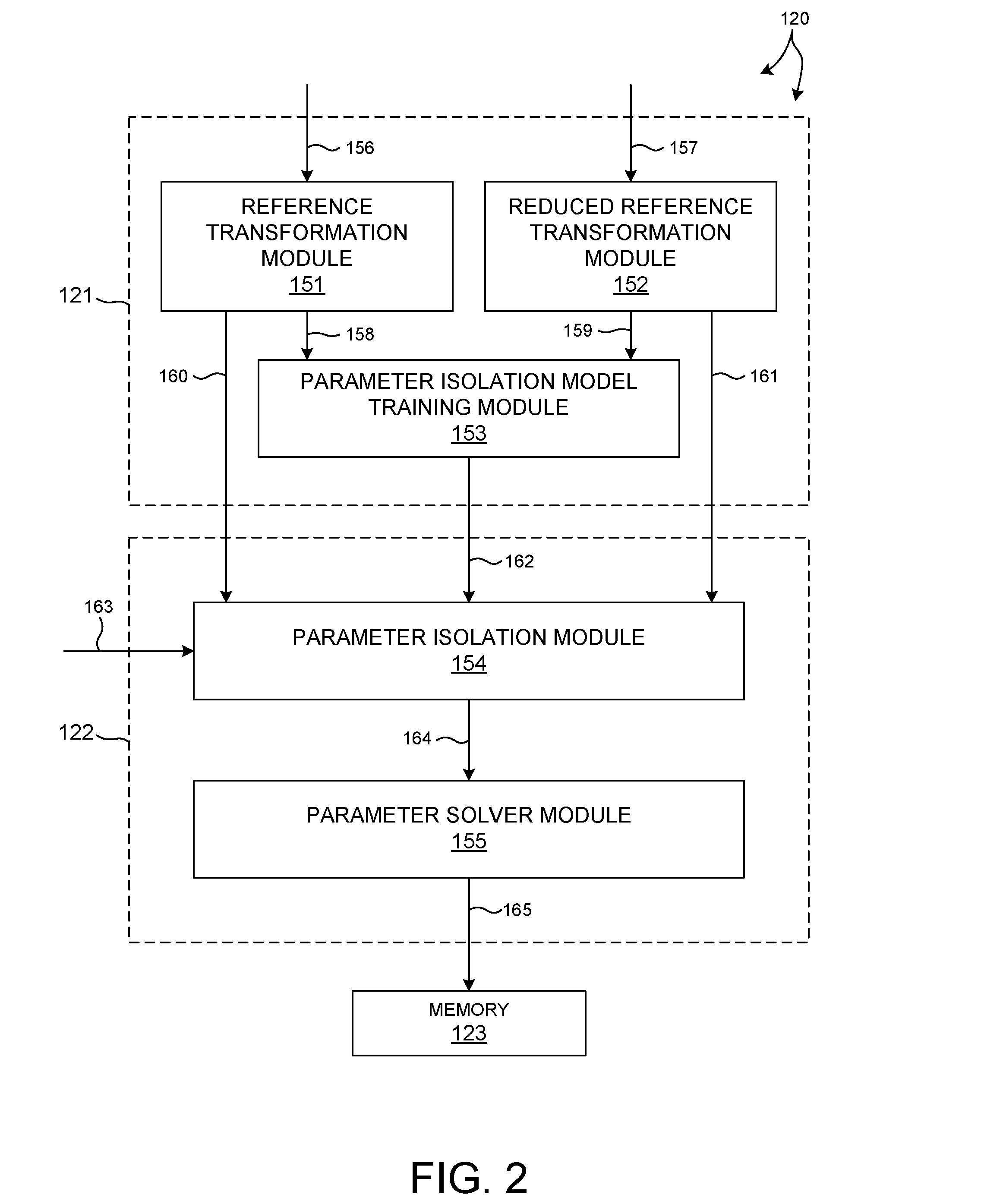Model-Based Single Parameter Measurement
a single parameter and measurement technology, applied in the field of model-based single parameter measurement, can solve the problems of low measurement sensitivity to some parameters, multiple parameter models having a relatively large number of floating parameter values may not be computationally tractable, and errors in parameter value estimation, so as to reduce the amount of computational effort, reduce the degree of freedom of measurement models, and reduce the computational burden of parameter isolation model training.
- Summary
- Abstract
- Description
- Claims
- Application Information
AI Technical Summary
Benefits of technology
Problems solved by technology
Method used
Image
Examples
Embodiment Construction
[0029]Reference will now be made in detail to background examples and some embodiments of the invention, examples of which are illustrated in the accompanying drawings.
[0030]Methods and systems for building and using a parameter isolation model to isolate measurement signal information associated with a parameter of interest from measurement signal information associated with other model parameters are presented herein. By isolating measurement signal information associated with a specific parameter of interest, the complexity and the number of floating parameters of a measurement model applied to the measurement signals can be reduced without sacrificing measurement accuracy. Thus, sufficiently accurate model-based measurement results can be obtained with dramatically reduced computational effort.
[0031]A trained parameter isolation model receives raw measurement signals and removes signal information related to specific, incidental parameters. The incidental parameters are model pa...
PUM
 Login to View More
Login to View More Abstract
Description
Claims
Application Information
 Login to View More
Login to View More - R&D
- Intellectual Property
- Life Sciences
- Materials
- Tech Scout
- Unparalleled Data Quality
- Higher Quality Content
- 60% Fewer Hallucinations
Browse by: Latest US Patents, China's latest patents, Technical Efficacy Thesaurus, Application Domain, Technology Topic, Popular Technical Reports.
© 2025 PatSnap. All rights reserved.Legal|Privacy policy|Modern Slavery Act Transparency Statement|Sitemap|About US| Contact US: help@patsnap.com



